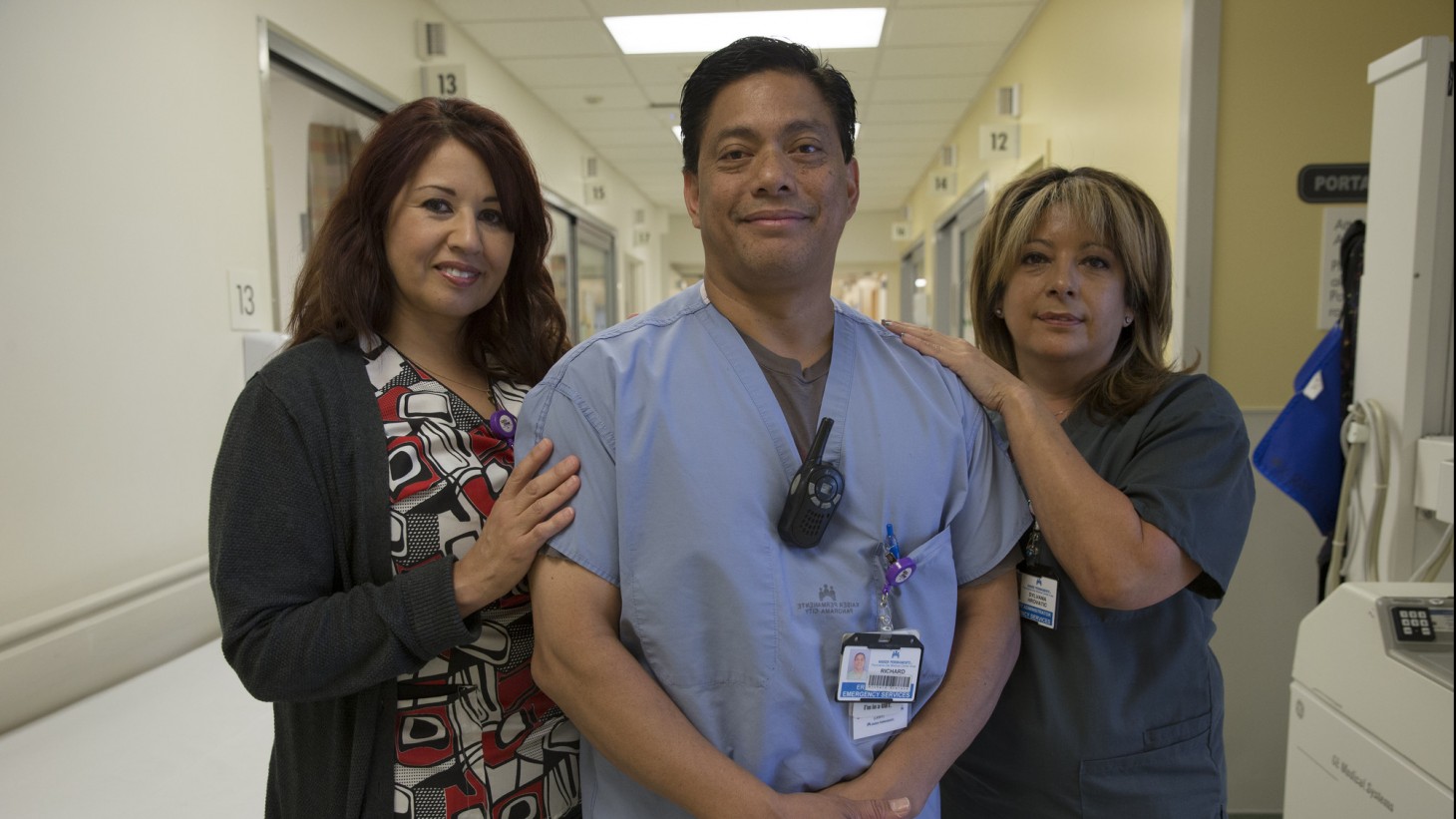Workforce of the Future
ED Takes a Group Approach to Skill Building

The team that learns together, improves together: From left, Rebecca Linares, ward clerk transcriber and SEIU-UHW member, emergency room assistant Richard Rowland, SEIU-UHW, and assistant department administrator Sylvana Hrovatic.
UBT takes charge of its own career development, improves patient service
Most people think about advancing their careers as a personal goal—if and when they get the time and support to map out a plan. But Panorama City’s Emergency Department unit-based team saw that boosting the team’s skills also matters to KP members, patients and the department. It used collaboration—and LMP trust funds—to improve the workflow and put several staff members on a solid career path.
“It’s not just about making more money. It’s also about being able to provide the best care possible,” says Richard Rowland, one of two emergency room assistants finishing courses needed to earn promotions to emergency service technician positions.
Early last year, the unit-based team started a “door-to-doc” project aimed at moving patients more efficiently through the ER. Results soon stalled because many staff members lacked the training or official certifications to help nurses with such triage duties as drawing blood and organizing labs. About that time, Sylvana Hrovatic arrived as assistant department administrator and management co-lead. She was focused on improving patient service and care, and says it was her labor partners who steered the conversation to career development.
With the help of ward clerk transcriber Becky Linares, labor co-lead and an SEIU UHW steward, the UBT reached out to the SEIU UHW-West & Joint Employer Education Fund to create a plan for employee career advancement in the department.
The training has made me more confident; if someone stopped breathing, I can perform CPR without having to call someone else.
Addressing changing needs
The team decided all 11 receptionists and its two emergency room assistants would gain the most from career development. “We had people who could do little more than answer the phone, register patients and take co-payments,” Linares says. “Our needs have changed; we need to do more to steer patients to the physicians and care they need in a crisis.”
For their promotions to ward clerk transcriber positions, the receptionists needed certifications in basic life support (BLS) and medical terminology, which allow them to schedule lab tests and perform life- and time-saving tasks. The emergency room assistants needed phlebotomy training and emergency medical technician (EMT) certification courses to earn promotions to emergency service technicians.
“The training has made me more confident; if someone stopped breathing, I can perform CPR without having to call someone else,” she says.
Getting results
Dan Bennington, an implementation specialist with the Education Fund, helped arrange the courses to be taught at convenient locations near the medical center. Hrovatic and Linares worked together to help employees in training balance their work schedules. All 11 receptionists are now ward clerk transcribers. The ER assistants also will be able to perform additional responsibilities that reduce the number of times patients need to be handed off—all of which reduces the risk of patient injury and wait times.
“Once I complete the two courses, I will be able to increase my scope of practice,” says Rowland, who’s taking more classes this fall while he balances his medical center shifts. “We needed to do more to help our patients as well as upgrade our skills.”
Hrovatic says: “The whole department has been very accommodating to their class schedule because they understood that a little extra work in the short term would pay off with the best care possible.”
The improved training already is getting results for ED patients. For instance, the average time taken for non-admitted patient visits now has dropped by nearly 30 minutes, to less than three hours. Linares notes that employees’ training costs were paid for by the SEIU-UHW West & Joint Employer Education Fund, a benefit outlined in the National Agreement.
“It’s getting easier; they are offering courses online,” says Linares, who adds that many staff members were able to take courses despite busy work schedules and family lives. “The information is there; all you have to do is read it.”
